1. Repurposing car parks
Dublin city centre is home to dozens of multi-storey car parks. But with retail on the decline and the city making moves towards becoming more bike-friendly and pedestrian-friendly, some of these concrete behemoths are in danger of becoming obsolete. Instead of allowing them to sit idle, is there a case to be made for repurposing these vast multi-storey buildings and reimagining them as something new?
There is precedent for this in other countries. In the UK, Make Shift, a social enterprise, converted a seven-storey car park in Peckham into a space for food businesses, retailers and markets. Additionally, it is home to more than 50 studios for local creatives and entrepreneurs.
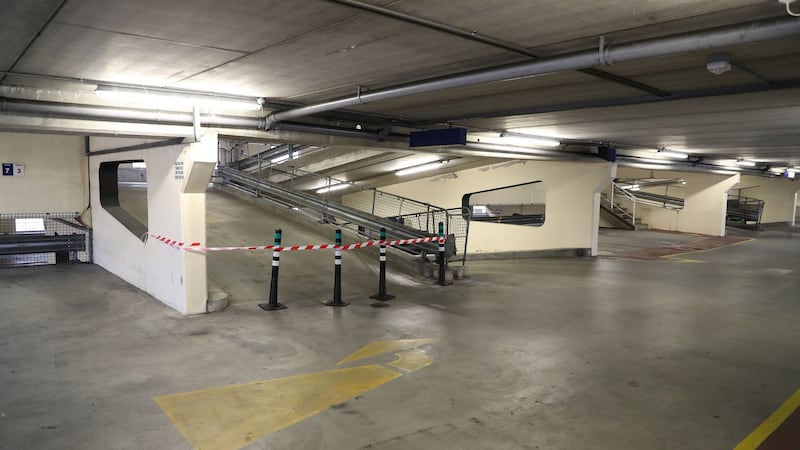
US cities such as Atlanta and Wichita have successfully converted former parking garages into apartments. In Paris, a start-up called La Caverne has successfully transformed underground car parks into organic urban farms. There are also examples of multi-storey car parks being combined with other uses. For instance, Lisbon is home to Park, a trendy rooftop bar located on the sixth floor of a car park.
How do we make this happen? In a recent column for this newspaper, economist David McWilliams suggested offering tax breaks to encourage new development and make such financial incentives contingent on final use. In other words, ensure that car parks are repurposed into spaces that will benefit citizens, artists and other start-ups.
2. Living in the shops
In the past, we have experimented with living over retailers. The Living Over the Shop scheme offered tax incentives for property owners to use the space over commercial properties for residential use. However, it was cut in 2006. In recent years, there have been calls for it to be restored. But why not go one step further and live in the shop?
With both retail and offices under threat, thinking is needed about how to ensure parts of Dublin don’t become ghost towns. One possible solution is converting vacant shops or businesses into homes. If remote working continues, there may even be scope to look into turning some of the city’s underused office buildings into apartments. Not only would it put empty properties to good use but it would help ensure that the city centre’s population is maintained and help breathe life back into the city.
While there are planning issues to consider, there is evidence that home buyers are receptive to living in buildings that were formerly used as shops or businesses. In recent years, former shops have been successfully converted into homes in the likes of Dún Laoghaire and Stoneybatter. Could this be replicated in the city centre?
Richard Guiney of Dublin Town says that converting commercial properties into residential homes needs to be approached with caution. There is a danger that too much residential use in commercial districts could "suck the vibrancy" from the area. "There will be more residential use in Dublin city but it needs to be at the higher floors, not at ground level," he says.
But on a small scale, this could work.
3. Pocket parks
If there is one thing that the pandemic has given us, it’s a renewed appreciation for our parks and green spaces. With that in mind, is it time to develop more pocket parks?
A pocket park is a mini park or parklet built on unused land. Most often, they are found in urban areas where access to outdoor spaces is limited. The benefits are myriad. Not only are they positive for the environment but they also allow urban dwellers to experience nature and wildlife. They provide a place for people to meet up or even just sit and relax. Additionally, they can also help alleviate pressure on existing parks and green spaces.
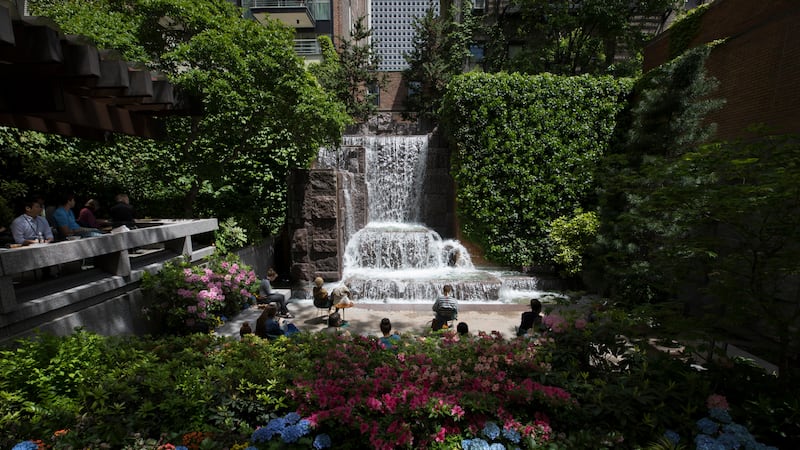
Perhaps the best example of a pocket park is Greenacre Park, a privately owned and maintained park in New York City. The miniature park is home to a waterfall, cafe and outdoor seating as well as an abundance of plants and flowers. Built 50 years ago, it now welcomes more than 200,000 visitors annually and, by its own measure, “provides innumerable moments of welcome tranquility and escape” for local residents, families and workers.
There are examples in Dublin, too. St Anne’s Road Pocket Park in Drumcondra was built by the community on an unloved and underused strip of land near Drumcondra Railway Station in 2016 and has since become a beloved fixture in the area.
4. A permanent market
One thing that has been sorely lacking in Dublin has been a permanent market space. In the past, numerous markets in Dublin have come and gone owing to high rents or a lack of available space. This, despite the fact that many were financially viable and popular among locals. In 2018, Dublin Christmas Flea welcomed more than 73,000 visitors and had an estimated spend in excess of €3 million.
With both the historic Fruit and Vegetable Market and Iveagh Market back in play, is now the time for Dublin City Council to make provisions for a permanent and dedicated market space?
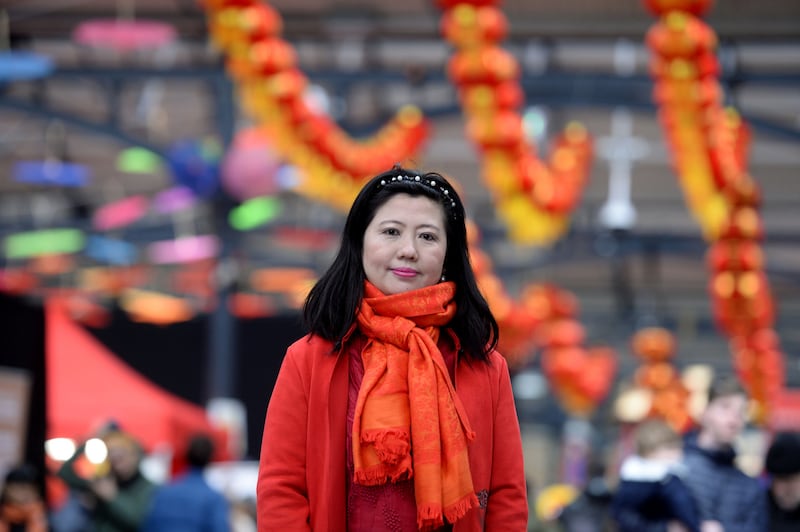
St George’s Market in Belfast perhaps offers a good template. Owned and operated by Belfast City Council, the famous indoor market exists as a permanent market space and hosts different markets and traders on different days.
Sharon Greene, co-founder of Dublin Flea Market, says that there now exists a huge opportunity to create something similar for Dublin. “We’re at this unique time in Covid where we have to go back to the drawing board and we have two historic market spaces that are potentially available to plan a very positive market,” she says.
Markets, she says, are where “culture and commerce collide”.
“They are the heart and soul of a city,” she says. “They weave so many different cultures and ideas and economies together and they do represent what is going on at a very grassroots level and forge communities together.”
5. Personal transport
Over the past year, public transport has operated – but often empty or barely occupied. With the pandemic likely to be a part of our lives for some time to come, it seems probable that some people will be wary of using buses, trains or trams in future.
It makes sense then that we come up with new ways to facilitate people getting in and out of the city centre using low-carbon personal transport. First and foremost, providing adequate facilities for walkers is paramount.
“Top of the pyramid is walking,” says Dr Conor Norton, an urban planner and designer and head of school at TU Dublin. “It is the most sustainable mode of transport. We have to focus on that. It’s the walking environment. How attractive is it? Is there enough space? Is it safe? That’s really important.”
Deirdre Black, heritage officer at Dún Laoghaire-Rathdown County Council, adds that “good street design” is essential so that people aren’t worried about “getting knocked down, bumped into or tripped up”.
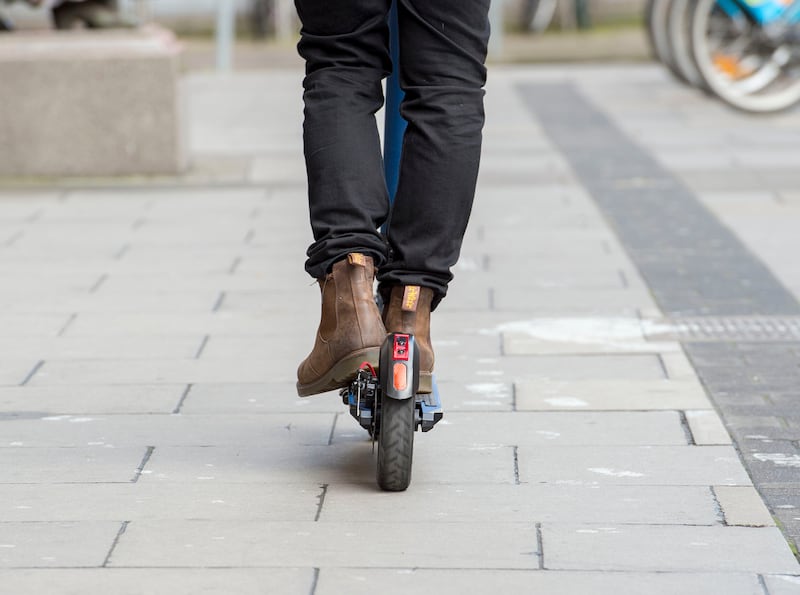
Likewise, more amenities should be made available for cyclists. Norton notes that Dublin has a “very cycle-friendly topography” that hasn’t been taken advantage of. Investment in cycle lanes, bike parking facilities and bike-sharing schemes would ensure that cyclists can get around the city safely and comfortably.
Finally, it is time to regulate e-scooters. At present, they are still illegal to use on a public road. This, despite the fact that sales are soaring and a number of international e-scooter rental companies are currently clamouring to set up shop in Dublin. If properly legislated for, they could be a very welcome addition to the city.
6. Diversifying the nighttime economy
It is often said that there is little to do in Dublin in the evenings bar go to the pub. Many shops, cafes and cultural institutions operate during daytime hours, meaning there is a dearth of things to do in the evening that don’t involve alcohol. This, despite the fact that footfall in the city centre actually increases after 5pm. Is it time to diversify and expand the city’s evening and nighttime offering?
The London Night Time Commission published a report around the British capital’s nighttime offering and suggested that parks, museums and libraries could be repurposed to offer people alternative things to do in the evening. Later opening hours of galleries and museums would likewise make “daytime culture” available to those who cannot access it otherwise. Other possibilities could include night markets or outdoor cultural events. And who knows, perhaps even a place to get a cup of coffee after 6pm?
Richard Guiney of Dublin Town says we need to ensure that the evening economy in Dublin “isn’t solely reliant on people going and having a drink but that there is plenty of things to do”.
“We need to look very imaginatively at arts and venues,” he says. “Like things they do on the Continent where you have a retail space until a certain time and then they move the stock out and they have a performance. We have to start thinking like that.”
7. Urban farms
All over the world, cities are beginning to embrace urban agriculture. The city of Detroit is home to over 1,400 urban farms and community gardens. The surge in urban agriculture has created jobs, forged strong community bonds and ensured communities have access to good quality food.
Urban farming is similarly thriving in cities like London and Paris where farms have been created in urban locations like car parks and railway tracks.
With numerous social, health, economic and environmental benefits, is it time for Dublin to follow suit and embrace urban agriculture? And what could it look like?
For one thing, it might mean making provisions for more allotments and community gardens. It also might mean thinking outside the box and using existing infrastructure. Take a look at Cork Rooftop Farm, for instance. Last year, it started growing vegetables and herbs on a rooftop in the city centre. It is now in the process of starting to offer vegetable subscription boxes.
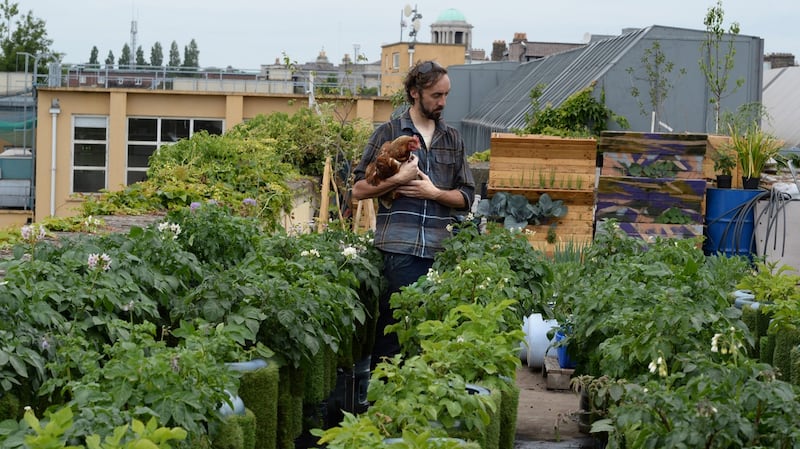
Andrew Douglas of Urban Farm has helped set up urban farming projects in the city centre and has shown what is possible in even the most densely populated areas of Dublin. For instance, his Belvedere College Urban Farm saw students grow everything from potatoes to heirloom tomatoes indoors. He also previously maintained the rooftop farm at the Chocolate Factory in Dublin 1.
“To grow your own food gives you a sort of power and it gives people dignity,” he says. “You know exactly what you are eating because you grew it. It’s good, it’s nourishing and you did this for yourself, your family and your community.”
8. ‘Fine urban grain’
For Dublin to continue to survive and thrive, it is essential that we maintain a healthy mix of use in the city centre. That means having commercial, residential, cultural and institutional buildings existing side-by-side.
“Diversity gives us the sort of resilience that we need to survive the larger changes in the economy over time,” says Conor Norton.
He says that the “physical fabric of the city centre has to be such that we can allow this adaptability, this diversity of uses, this ever changing mix of uses to occur”.
According to Norton, it is therefore essential that we maintain what is known as “fine urban grain”. That means having a number of smaller-sized buildings coexisting cheek by jowl as opposed to having areas dominated by large buildings. Smaller buildings, he explains, are more flexible and better positioned to seamlessly change use.
“We have problems in areas with larger buildings with larger footprints,” he says. “We tend to get greater difficulties with how those areas can be flexible and adaptable.”
Areas like South William Street, Drury Street and Aungier Street are positive examples of what can be achieved when we maintain a fine urban grain and avoid consolidating multiple smaller buildings into one big building.
“We have other great streets that need to get more attention like Capel Street, Dorset Street and Thomas Street,” he adds. “They might not be doing so well right now but their prospects in the future could be really good because of the grain.”
9. Incentivising new businesses
Right now, the cost of doing business in Dublin city centre is seen as prohibitively expensive, particularly for small and independent enterprises. Is there a case to be made for implementing supports to make it cheaper and more accessible for new businesses to set up shop in Dublin?
Richard Guiney, of Dublin Town, says yes. Back in 2010, he recalls that there was significant concern around the viability of South William Street. It had a high vacancy rate and other businesses on the street were worried.
The district was rebranded as the Creative Quarter and supported by a marketing campaign. Combined, the measures helped rejuvenate the district.
Post-Covid, there may be scope to offer something similar in areas of the city that are struggling. Guiney suggests that property owners, Dublin City Council and the likes of Dublin Town could work in conjunction with one another to offer small artisan businesses a leg up with things like affordable rents, short-term leases and marketing on a “structured” and “curated” basis.
“People are looking for something that’s unique. We can do that properly and it would be to the benefit for all of us in the longer term, especially when it comes to giving people an opportunity to try ideas.”
10. Outdoor swimming
Over the last year, sea swimming has become all the rage. So much so that it has prompted a national conversation about the acceptability of DryRobes. In Dublin, the likes of Seapoint and the Forty Foot have been overwhelmed with blow-ins. Is it time then to look at putting more outdoor swimming facilities in place in the city centre?
Dublin is something of an outlier when it comes to not having much in the way of outdoor swimming facilities. Indeed, such pools can be found all over Europe, including in cities with climates similar to our own.
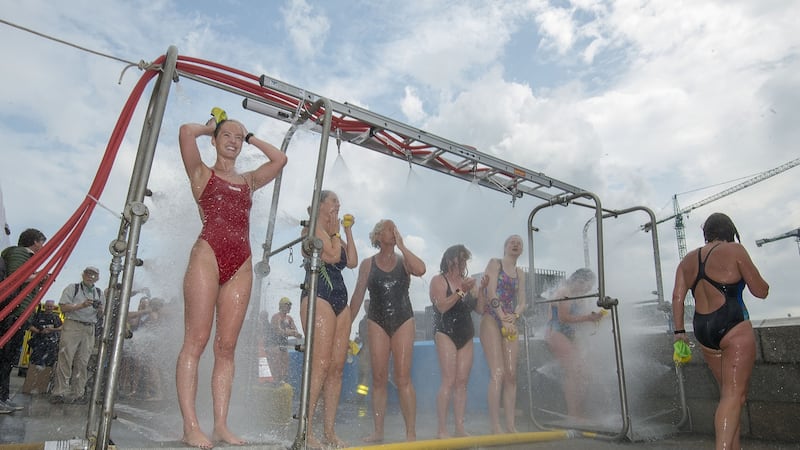
In London, there are a number of popular outdoor swimming pools or “lidos”. London Fields Lido is a heated open-air pool that is open all year-round, whatever the weather. In Copenhagen, locals can take a dip in the public harbour baths. In Helsinki, more than 5,000 people visit Helsinki Swimming Stadium each day during the summer months.
Last year, Dublin City Council proposed plans for a heated outdoor swimming pool on the Liffey. And in a recent letter to this paper, Ciaran Cuffe, the Green Party MEP for Dublin, suggested that authorities could encourage outdoor swimming by raising the water level at George's Dock and improving the water quality. Such a facility would be well used by locals and visitors alike, he said.
Might we see wild swimming take over the city centre? Wait and see.
11. Red light cameras
As part of a "traffic wish list" presented to Minister for Transport Eamon Ryan last year Dublin City Council sought the introduction of "camera based enforcement for red light running". Typically under this system, now in use in more than 75 countries, a camera is triggered when a vehicle enters the intersection after the light has turned red, a picture of the licence plate of the offending motorist is captured and fines can be issued.
The system has already been trialled in Dublin over an 18 month period from June 2015 at Blackhall Place, in an effort to stop motorists breaking the red light and hitting Luas trams, and the city council said it was successful.
During the trial 1,300 road users were detected breaking the lights and more 700 prosecutions were brought.
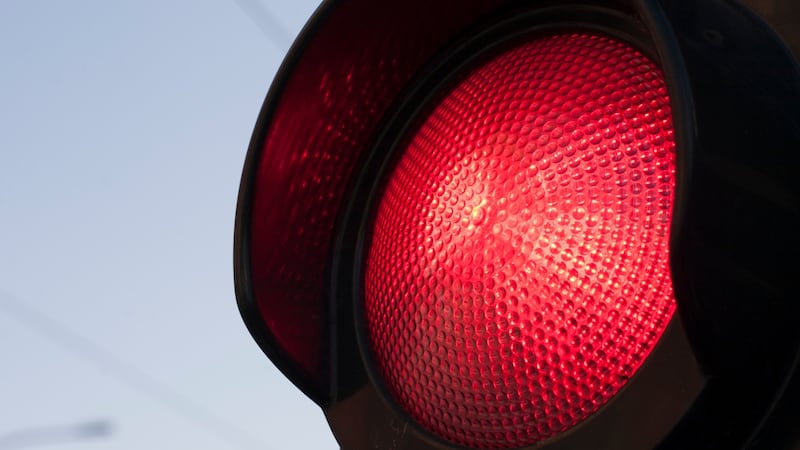
Despite this success and the enthusiasm on behalf of the council, at least in the extension of its use, this road safety measure has been shelved. Gardaí “were enforcing red light running using city council equipment for a short period at one location but have stopped doing it” the council said in its note to Mr Ryan.
It is hard to imagine reasonable arguments against using this system – if the light is red and the motorist continues through the junction, they have broken the law. If a Garda was there to witness it, the offence would be prosecuted, surely the use of a camera is far more efficient than having a Garda on every junction and the photograph provides quibble-free evidence of the offence. – Additional reporting: Olivia Kelly















